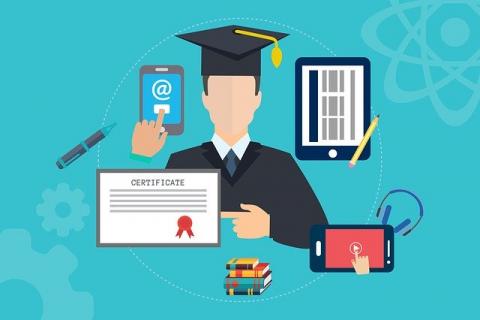 January 1, 2018
January 1, 2018
Good training is a process and, as such, it depends on a set of well-defined steps. You need to analyze your current service, teach agents how to use good tools, promote case studies, and monitor your performance metrics . In the following topics, we present 8 tips for doing good training. Check out!
1. Make an analysis of your service
To know what to cover in your customer service training, you first need to identify the points that need to be worked on and improved on in your team. Through performance indicators and reports, you can monitor the metrics of your attendants and get informed about their productivity .
From this analysis, you will achieve much more objectivity in your training. The possibility of this training being effective in fact, helping to optimize your service, will be much greater.
Another way to identify customer needs and assess service skills that can be implemented in your team is to analyze the competition. For this, you can use the technique of “hidden customer”. In it, an employee can pretend to be a customer and, in this way, learn about the strengths and weaknesses of other companies.
2. Introduce and teach how to use the available tools
It is necessary to invest in the technical training of its attendants. Present the service tools available in your company and teach your employees to use them correctly.
It's no use having good customer service software if your employees don't know how to handle the resources provided by it. The technical domain of your team is essential to provide quality service, which will identify, analyze and solve the problems that come to it.
How to choose the ideal Help Desk
3. But don't just focus on the technical aspects
There is no point in having an attendant who knows how to solve the customer's problems in a technical way, but who treats them in a cold and uncourteous manner. This customer may be satisfied with the resolution, but it certainly won't keep a good impression of the service.
Therefore, in addition to teaching the employee how to deal with the available tools, it is also necessary to focus on the behavioral side, addressing, among others, the following aspects in their customer service training:
The correct way to approach and respond to the customer, with a more personal contact, with education and without becoming invasive;
Interpersonal skills;
The negotiation capacity of the attendants;
The service standards required by your company.
4. Use real service cases
Using real-world service case examples helps make your customer service training clearer and more objective.
List positive and negative experiences and build on them into a discussion of what made them work and what didn't work and what could be done to improve them. This encourages your team to be proactive and able to deal with future problems.
Your more experienced employees can also report on more complicated cases they have handled and how they went about solving them.
It is still possible to use customer feedback, especially the most difficult ones, to point out some of the reasons for complaints that reach the customer service department and teach the best way to deal with them.
5. Invest in your knowledge base
In addition to carrying out constant training with your team, it is necessary to invest in an excellent knowledge base .
With this troubleshooting library, your agents will be able to find quick answers to customer service, from tutorials and sharing of cases already solved.
Customer service training: 8 best practices
The objective of customer service training is to prepare professionals in the field to deal with customers in an assertive and thoughtful manner.
In addition, another objective is to contribute to the continuous improvement of these professionals and the service offered to the company's customers.
Training for excellence in customer service has the following challenge:
solve the customer's problem,
as soon as possible,
in the channel that the consumer prefers,
showing empathy,
knowing the customer's history with the company.
Therefore, we suggest a step-by-step guide on how to set up customer service training :
Develop interpersonal skills
Share everything about the product or service
Use cases to exemplify training
Listen to calls from sellers
Create standards of care and share
Establish a mentoring program
Create a knowledge base
Train on the use of the tools
Before we delve into each of these steps, it's important that you and all professionals in the field keep in mind that every customer interaction is unique.
Every contact is an experience and one mistake can jeopardize a customer relationship for years .
According to surveys, 56% of customers would stop shopping with a company due to a poor customer service experience, in contrast, 7 out of 10 consumers say they would pay more to do business with a company that offers great customer service.
Well, with all of that in mind we move on to practical tips on how to set up customer service training.
1. Develop interpersonal skills
70% of shopping experiences are based on how the customer feels they are being treated . Thus, it is essential to ensure that the professional who will serve the client will treat them with attention, interest and empathy.
Putting it that way, it seems pretty obvious, but working with customer service can be quite difficult, after all, there are customers and customers.
Therefore, in addition to technical training, it is important to create customer service training that teaches the professional how to deal with impatient, aggressive and frustrated customers.
It's not that every customer will be like that, but there will be some with that profile.
And truth be told, customers who contact the company because they are having problems or difficulties in using the product or service are generally not in a good mood.
In these cases, the service manager must know how to act to solve the problem , calm the customer and “respond” to possible unpleasant words.
One of the ways to do this is to create trainings that involve simulations to show, in practice, how to deal with stressful situations.
It is important to train in the development of empathic communication, which is the characteristic of putting yourself in the other's shoes, in every service.
2. Share everything about the product or service
Few things are worse in customer service than a professional who doesn't understand the customer's problem, because he doesn't know the features of the product or service.
In addition to personal skills, it is important for the service manager to know in depth the services and products offered by the company , as well as all its functions and the most common difficulties faced by customers.
This is continuous learning, after all, the product or service is likely to evolve over time.
Keep service professionals on top of everything you do.
Update the service professional with each new product in your product. Take the opportunity to share predictions about areas that may raise more questions for customers and highlight the most effective solutions.
A tip for team training is to make a face-to-face presentation and update the knowledge base so that the professional has quick access to shared content.
This reduces service time, solves the customer's problem and improves their experience with your brand.
When hiring a professional for the customer service area, it is essential to make an immersion , complete training with this professional so that he can master each of the features of products and services and also know:
the company,
your organizational culture,
the tone of communication,
the profile of the customers you will be dealing with and more.
Onboarding the service team will help newcomers master everything they need about their work and customer relationship in less time, accelerating the learning curve.


